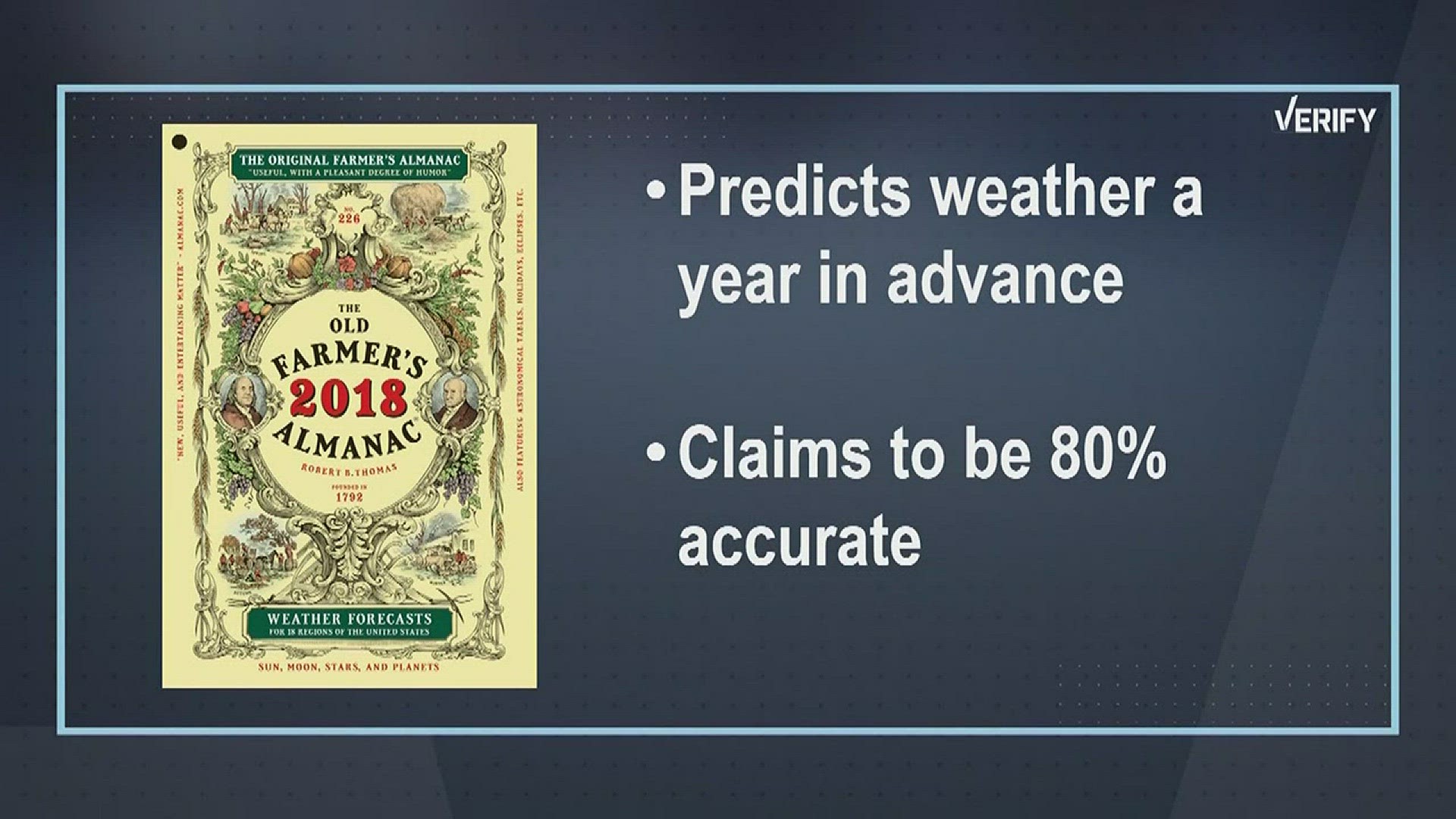Will we be buried in snow this winter?
The new 2018 Old Farmer's Almanac prediction is circulating online saying North Texas is in for a brutal blast of cold and snow.
Before anyone freaks out -- our Verify team looked into just how accurate the almanac really is.
First, you need to know there are two different almanacs: the Farmer's Almanac and the Old Farmer's Almanac, that's the one we're talking about. It claims to be 80 percent accurate.
Meteorologist Colleen Coyle says, "that would be an amazing thing, a breakthrough in science if you could say a year from now what the weather is going to be like. But, honestly it's a coin toss for things like that."
So, let's put its predictions to the test.
Here are the Almanac's forecast for the past six winters:
2016-2017: Prediction: Mild and dry
Reality: Warmest winter on record
2015-2016: Prediction: Mild and dry
Reality: Warm and dry, above normal temperatures, below normal rain and snow
2014-2015: Prediction: Cold and dry
Reality: Cold and wet -- above average snow and rain
2013-2014: Prediction: Cold and dry
Reality: Cold and snowy, above average snow and significantly low rain
2012-2013: Prediction: Cold and snowy
Reality: Warm and wet, above normal temperatures and rain, below normal snow
2011-2012: Prediction: Mild and dry
Reality: Warm and wet, above normal temperatures, well above normal precipitation and below normal snowfall
Only two of those predictions are right. The past two winters were mild and dry just as expected. The other fourwere either wetter or warmer than predicted.
"Be careful where you get your information from," Coyle cautions, "everyone out there nowadays has a long-range forecast and, to be honest, even getting a seven to ten-day forecast is difficult for meteorologists."
But, get this: the Almanac even predicts the weather down to stretches of days, a year in advance.
We dug up six of North Texas' most notable weather events, to see if the predictions measured up.
Spoiler alert -- it's 50-50.
The Almanac missed the mark for the 1978 New Year's Eve ice storm, predicted to be sunny and cold; as well as the 1995 Mayfest hail storm, which was supposed to be warm with light showers; and the end of March 2006 was predicted to be sunny and warm, but flooding rains forced people in Dallas County out of their homes.
Now these next three: the 2015 Garland and Rowlett tornado, 2016's billion dollar hail storm in Collin County and the tornado in downtown Fort Worth in 2000 -- it did predict a chance of thunderstorms for each of these days, which always has a chance of producing a tornado.
"It's nothing that you can trust long-term. You've got to turn to us, you've got to turn to your local folks that know the seasons here and know what to expect. And you know that we're basing our answers and what we show you on science and on things that can give you a very reliable forecast," urged Coyle.
We can VERIFY, no, the Almanac isn't 80 percent accurate. The best you could argue is about 50 percent.
So leave the forecasting to the meteorologists, or maybe Dale Hansen who has his own winter forecast, "It's going to be colder than it is now, sometimes really cold, maybe some snow but not guaranteed."

